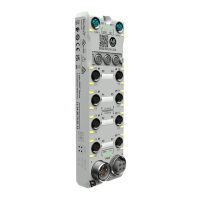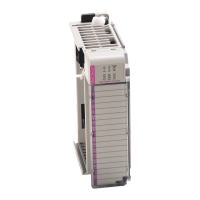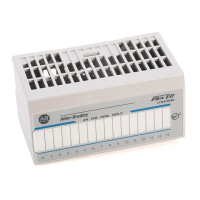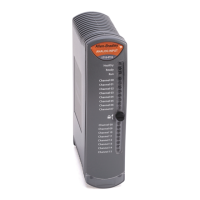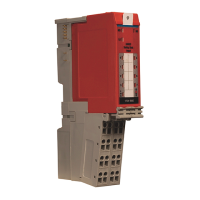18 Rockwell Automation Publication 5032-UM001A-EN-P - April 2023
Chapter 2 Module Features
Module Inhibiting Module inhibiting lets you indefinitely suspend a connection between a controller and a
module without removing the module from the configuration. This process temporarily stops
the connection between the controller and the module.
You can use module inhibiting in the following scenarios.
• You want to perform maintenance on the module.
• You want to update a module, for example, update the module firmware revision.
• You use a program that includes a module that you do not physically possess yet. You
do not want the controller to look for a module that does not yet exist. In this case, you
can inhibit the module in your program until it physically resides in the system.
Use the following procedure.
1. Inhibit the module.
2. Perform the action on the module.
3. Uninhibit the module.
To inhibit a module, see Connection View
on page 48.
Electronic Keying Electronic Keying reduces the possibility that you use the wrong device in a control system. It
compares the device that is defined in your project to the installed device. If keying fails, a
fault occurs. These attributes are compared.
The following Electronic Keying options are available.
IMPORTANT Whenever you inhibit a module with outputs, all outputs change to the
state that is configured for Program mode.
For more information, see Configure Channel Output State in Fault Mode
on page 25.
Attribute Description
Vendor The device manufacturer
Device Type The general type of the product, for example, digital I/O module.
Product Code The specific type of the product. The Product Code maps to a catalog number.
Major Revision A number that represents the functional capabilities of a device
Minor Revision A number that represents behavior changes in the device
Keying Option Description
Compatible
Module
Lets the installed device accept the key of the device that is defined in the project when the
installed device can emulate the defined device. With Compatible Module, you can typically
replace a device with another device that has the following characteristics:
• Same catalog number
• Same or higher Major Revision
• Minor Revision as follows:
– If the Major Revision is the same, the Minor Revision must be the same or higher.
– If the Major Revision is higher, the Minor Revision can be any number.
Disable Keying
Indicates that the keying attributes are not considered when attempting to communicate with
a device. With Disable Keying, communication can occur with a device other than the type
specified in the project.
WARN ING: Be extremely cautious when using Disable Keying; if used incorrectly, this option
can lead to personal injury or death, property damage, or economic loss.
We strongly recommend that you do not use Disable Keying.
If you use Disable Keying, you must take full responsibility for understanding whether the
device being used can fulfill the functional requirements of the application.
Exact Match
Indicates that all keying attributes must match to establish communication. If any attribute
does not match precisely, communication with the device does not occur.

